In animal fats, tallow and lard have remained steady contenders for centuries. Household names in our ancestors’ kitchens, these two versatile commodities have imparted rich flavor to our food, fueled the earliest candles, and even been utilized in traditional skincare. However, with the rise of modern vegetable oils, these traditional fats have taken a back seat. But as people are rediscovering the benefits of using more natural, less processed ingredients in their daily lives, the conversation surrounding tallow vs lard is once again gaining traction.
Derived from different sources, tallow is the rendered fat of cattle or sheep, while lard stems from the adipose tissue of pigs. Although their uses often overlap, some key differences in taste, consistency, and nutrient profiles set them apart. In this article, we will explore the unique characteristics and applications of tallow and lard, delving into the pros and cons of each so you can make a well-informed decision when choosing which traditional fat to incorporate into your life.
What is Tallow?
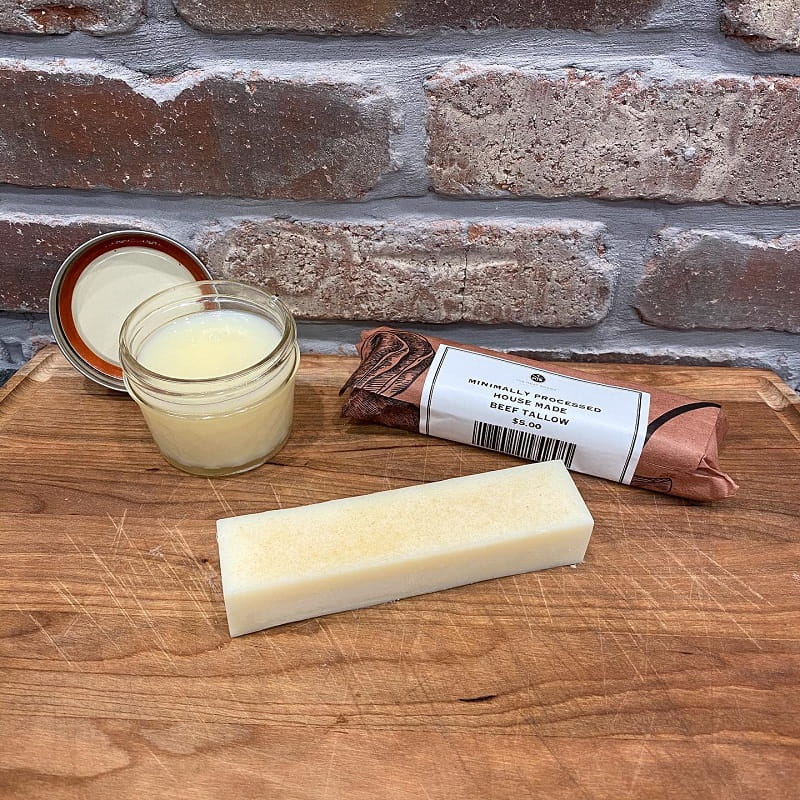
Tallow is a type of rendered fat that comes from beef or mutton. It’s made by slowly melting the fat and then allowing it to cool and solidify. The result is a creamy, white substance that can be used in various ways in the kitchen.
One of the most common uses for tallow is frying. Because it has a high smoke point, it’s great for cooking at high temperatures. It’s also popular in traditional dishes like Yorkshire pudding and pastries.
But tallow isn’t just for savory dishes. It can also be used in baking, adding a rich, buttery flavor to cakes and pastries. And because it’s solid at room temperature, it can be used in place of butter or shortening in recipes that require solid fat.
Of course, like any fat, tallow should be used in moderation. It’s high in saturated fat, which is linked to an increased risk of heart disease. But when used in moderation and as part of a balanced diet, tallow can be a delicious and versatile ingredient in a variety of dishes.
What is Lard?
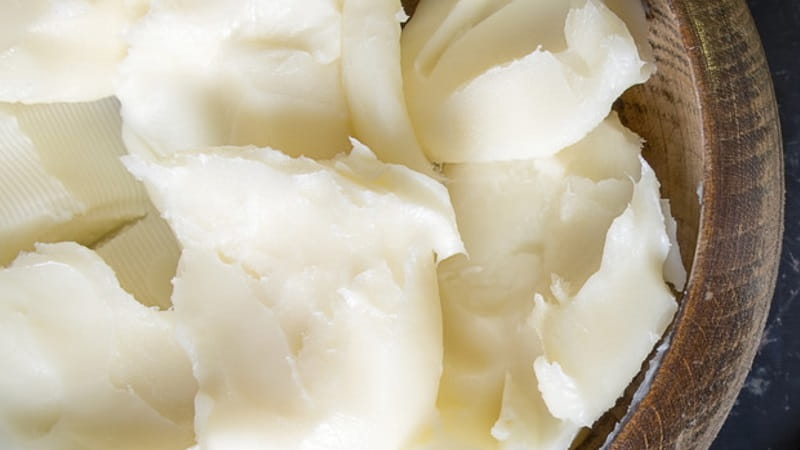
Lard is pig fat, specifically the fatty tissue around the animal’s abdomen and kidneys. It has been used for centuries in cooking and baking, but its popularity has declined recently due to health and nutrition concerns.
Lard is a versatile ingredient in the kitchen, and it has a high smoke point, making it perfect for frying and sautéing. It is also excellent for pastry and pie crusts, providing a flaky texture and delicious flavor. Many professional bakers prefer lard over other fats due to its unique qualities.
While lard is high in saturated fat, it is also a good source of monounsaturated fat, which has been shown to affect cholesterol levels positively. However, it is important to consume lard in moderation, as with any high-fat food.
One of the benefits of using lard is that it is a natural and minimally processed product. Many store-bought vegetable oils and shortenings are heavily processed and contain artificial ingredients. On the other hand, Lard is rendered fat from pigs, making it a more natural and wholesome option.
What Are The Similarities Between Tallow And Lard?
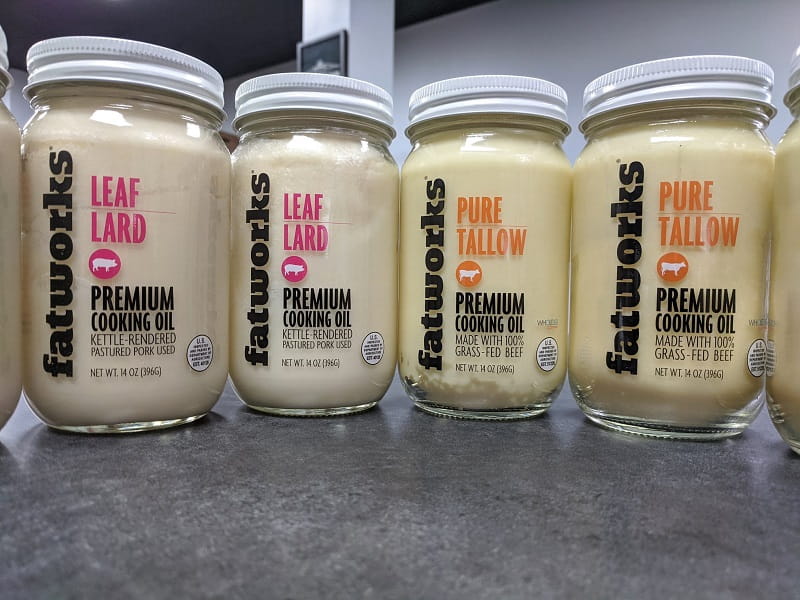
I have spent quite some time researching and experimenting with two of the most common types of fat used in cooking: tallow and lard.
At first glance, they may seem very different, but upon closer inspection, the two have quite a few similarities. Both are solid at room temperature and can be melted down for cooking.
One of the main similarities between tallow and lard is their high smoke point. This means they can be heated to high temperatures without burning or smoking, making them ideal for frying and sautéing. They are versatile and can be used in various dishes, from baked goods to savory dishes.
Another similarity between the two is their flavor profile. While they have some differences in taste, tallow and lard have a rich, savory flavor that adds depth and complexity to dishes. They are both relatively neutral in flavor, meaning they won’t overpower the other ingredients in a dish.
Both tallow and lard are also very high in saturated fat, which has received a lot of negative attention in recent years. However, recent studies have shown that saturated fat may not be as harmful as previously thought and can have some health benefits when consumed in moderation.
Finally, tallow and lard are traditional fats used for centuries in many different cultures. They have stood the test of time and remain popular today due to their versatility, flavor, and high smoke point.
What’s The Difference Between Tallow vs Lard?
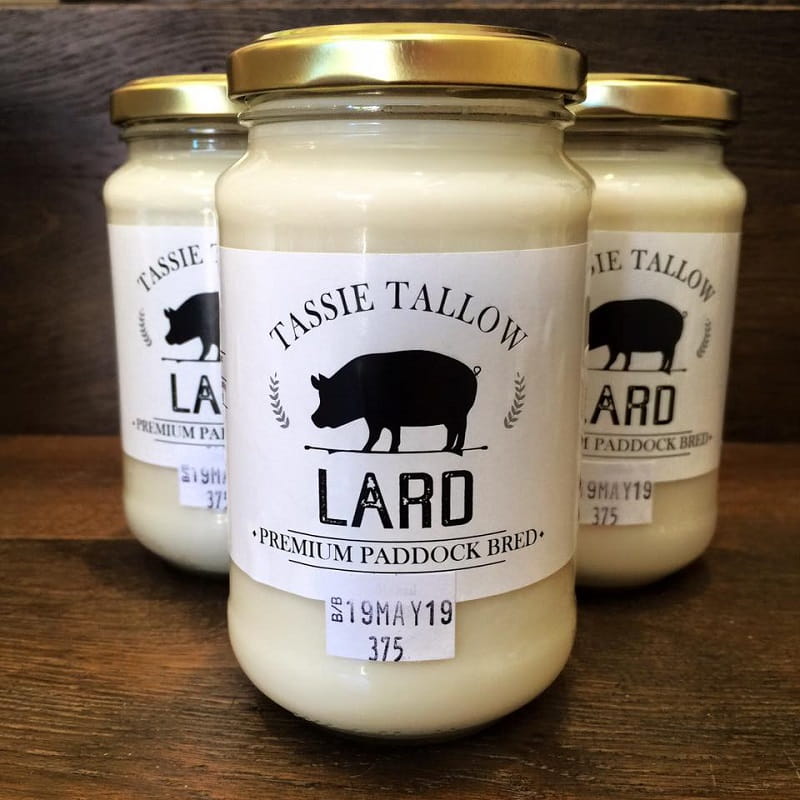
On the surface, they may seem like they’re pretty much the same thing, but there are some key differences between the two. Tallow is beef or mutton suet, while lard is pork fat. This difference in sourcing also leads to varying levels of saturated and polyunsaturated fats, with tallow being slightly higher in both. When it comes to cooking, lard is softer and more pliable due to its lower saturated fat content, while tallow is harder and has a greater fragrance.
Tallow is also known to be a superstar in skincare due to its high levels of vitamins A, D, and K. While some may consider them interchangeable, the discerning foodie or skincare fanatic knows that the difference between tallow vs lard is worth taking note of.
I’ve spent plenty of time using tallow and lard in my recipes. And here’s what I’ve learned:
Source
Tallow is derived from beef fat, while lard is made from pig fat. Both are animal-based fats used for centuries in cooking and baking. However, tallow has been used more for industrial purposes, such as making candles and soap, while lard has been used more for culinary purposes.
Taste Of Dishes
When it comes to taste, tallow and lard, add a rich, savory flavor to dishes. However, tallow has a stronger beefy taste that can overpower certain dishes, while lard has a more subtle flavor that can complement a wider variety of dishes.
Texture And Consistency
Tallow has a firmer texture than lard, which makes it better for creating flaky crusts and crispy fried foods. Conversely, Lard has a softer texture that can make baked goods like pie crusts more tender and moist.
Characteristics
One of the main differences between tallow and lard is their smoke points. Tallow has a higher smoke point than lard, meaning it can be heated to a higher temperature before it begins to smoke and break down. This makes it better for high-heat cooking methods like frying. On the other hand, Lard has a lower smoke point and is better suited for lower-heat cooking methods like sautéing.
Physical Properties
Tallow is typically more yellow and has a harder consistency at room temperature, while lard is typically white and softer. Tallow also contains more saturated fat than lard, which makes it more stable at room temperature and less likely to spoil.
Nutritional Value
Both fats are high in saturated fats, which can contribute to heart disease when consumed in excess. However, tallow is higher in saturated fats than lard, with around 50% of its fat content being saturated. Lard, on the other hand, is around 40% saturated fat. That being said, both tallow and lard contain some beneficial nutrients, such as vitamin E and K2.
The Uses
Tallow and lard have slightly different uses in the kitchen. Tallow is most commonly used for frying and roasting due to its high smoke point. It’s also a popular ingredient in soap and candle making. Lard is often used for baking, as it adds a rich, buttery flavor to baked goods. It’s also an excellent option for making flaky pie crusts or frying up a batch of crispy chicken.
Availability
In terms of availability, both tallow and lard can be a bit tricky to find. Tallow is typically made from beef fat, while lard is pork fat. While you may be able to find both at your local grocery store, you may have better luck finding them at a specialty butcher or online.
Which Type Of Fat Has More Saturated Fat: Tallow Or Lard?
As mentioned earlier, tallow has a higher percentage of saturated fat than lard. This is something to remember if you’re watching your saturated fat intake. However, it’s worth noting that tallow and lard can be part of a healthy diet when consumed in moderation.
Cooking Properties
Finally, let’s talk about the cooking properties of tallow and lard. Tallow has a high smoke point, which means it can be heated to high temperatures without burning. This makes it ideal for frying and roasting. On the other hand, Lard has a lower smoke point, making it better suited for lower-heat cooking methods like baking or sautéing.
Skin
Tallow is derived from beef, while lard comes from pork. This means that the texture and composition of the fat will be slightly different. Tallow tends to be harder and more waxy, while lard is softer and creamier. It’s also worth noting that tallow has a stronger flavor compared to lard, which can be both a pro and a con depending on your preferences.
Price
When it comes to price, there’s no clear winner. The cost of both tallow and lard will vary depending on where you live, the quality of the product, and the demand for it. Tallow tends to be slightly more expensive than lard, but the difference is usually negligible.
Which One Is Better For Frying: Tallow Or Lard?
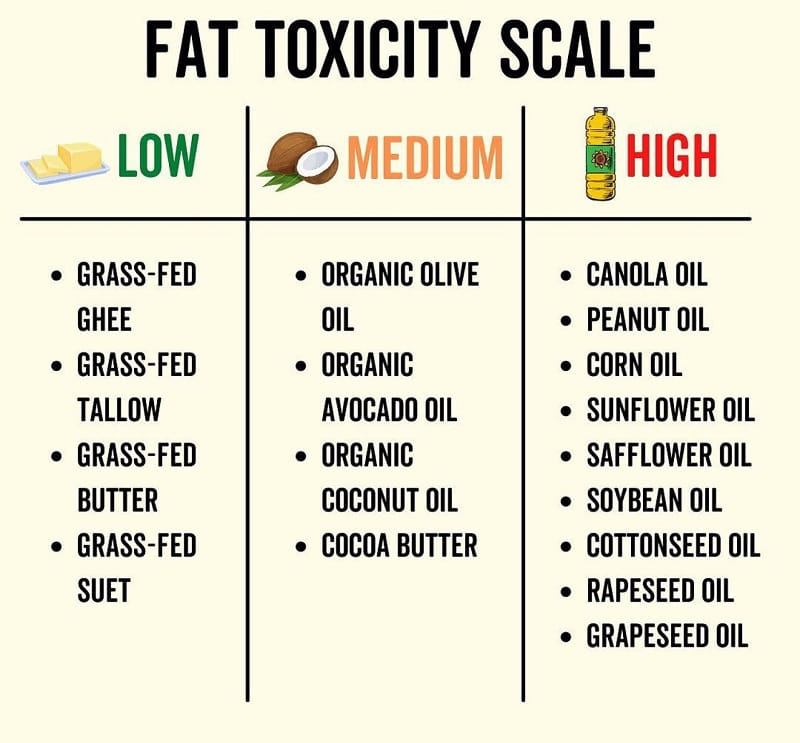
If you’re looking for fat that’s great for frying, tallow, and lard are excellent choices. They both have high smoke points (around 400-450°F), which means they won’t break down and burn easily when exposed to high heat. However, tallow has a slightly higher smoke point compared to lard, making it a better choice for deep-frying or other high-heat cooking methods.
Tallow vs. Lard: Which Is Better?
When it comes down to it, there’s no clear winner between tallow and lard. Both have pros and cons; which one you choose will depend on your preferences and the specific recipe you’re making. If you’re looking for fat, that’s great for baking or making pastries, and lard is an excellent choice thanks to its creamy texture and neutral flavor. On the other hand, tallow might be the way to go if you’re cooking a savory dish that could benefit from a stronger flavor profile.
Which Is Healthier, Tallow Or Lard?
Both tallow and lard are high in saturated fat, which can increase your risk of heart disease if consumed in excess. However, recent studies have shown that not all saturated fats are equal, and some may benefit your health. Tallow is particularly rich in conjugated linoleic acid (CLA), a type of fatty acid linked to several health benefits, such as reducing inflammation and improving insulin sensitivity. On the other hand, Lard is high in vitamin D, which is essential for bone health and immune function.
Which Type Of Fat Is More Commonly Used In Traditional Cuisines?
Both tallow and lard have been used for centuries in traditional cuisines all over the world. Tallow is particularly popular in Northern European and Middle Eastern cuisine, while lard is a staple in many Latin American, Mediterranean, and Asian dishes. Ultimately, the choice between tallow and lard will depend on your specific cuisine and recipe.
Read more:
Can You Use Tallow And Lard Interchangeably In Cooking?
If you’re unsure about using tallow and lard interchangeably in your cooking, the answer is yes, you definitely can!
Although each fat comes with its unique taste, for the most part, it can be used interchangeably when cooking. Lard is great for creating flaky and tender pie crusts or frying chicken or french fries. Meanwhile, with its higher saturated fat content, tallow is perfect for creating crispy textures when pan-frying vegetables or meat. So, whether you want to add flavor or texture to your dish, lard, and tallow can deliver great results.
Health Benefits Of Using Tallow And Lard
Many of us grew up being told these animal fats were unhealthy and should be avoided at all costs. But as it turns out, that’s not true. There are a number of compelling reasons to start incorporating tallow and lard into your diet and personal care routine.
First and foremost, it’s important to understand the difference between tallow and lard. Tallow is derived from beef fat, while lard comes from pork fat. Both are highly versatile and can be used in various applications. For example, tallow can be used for cooking, soap making, and even as a moisturizer for skin and hair. Lard is commonly used for cooking, baking, and making soap and candles.
Now, let’s dive into some specific health benefits of using tallow and lard.
- Rich in Nutrients: Tallow and lard are both rich in a number of essential nutrients, including vitamins A, D, and K, as well as various minerals like calcium, magnesium, and zinc. These nutrients are essential for maintaining healthy skin, bones, and overall bodily function.
- Supports Healthy Digestion: Contrary to popular belief, animal fats like tallow and lard are quite easy for the body to digest. They contain a balanced ratio of omega-3 and omega-6 fatty acids, which can help support healthy digestion and reduce inflammation in the gut.
- Good for Skin and Hair: Tallow and lard are highly moisturizing, making them excellent natural alternatives to store-bought skincare and hair care products. They can help soothe dry, irritated skin and promote healthy hair growth.
- Stable at High Temperatures: Unlike many vegetable oils, which can become rancid and produce harmful free radicals when exposed to high heat, tallow and lard are highly stable and can be used for cooking at high temperatures without producing harmful byproducts.
- Sustainable and Ethical: When sourced from sustainable and ethical producers, tallow and lard are highly sustainable animal products that can be used as part of a low-waste lifestyle. They can also be a more ethical choice for those concerned about animal treatment in the meat industry.
How Long Do Tallow And Lard Last In The Pantry Or Fridge?
Knowing how long they can last in the pantry or fridge is good when storing tallow and lard. To the factual, tallow does not need to be refrigerated and can last for a year or longer. However, it’s important to note that oxidation can be a concern over time.
On the other hand, lard has a shorter shelf life, lasting for about 4 to 6 months at room temperature in the pantry without degrading quality. Lard can last for up to a year when stored in the fridge. For those who want to extend its shelf life even further, lard can be stored in the freezer for a few years.
Overall, it’s important to keep these factors in mind and store tallow and lard in a cool, dry place to ensure their freshness for as long as possible.
How Are Tallow Made?
The process is quite simple, but it requires patience and precision. The first step is to collect the animal fat from a reputable source. The quality of the fat determines the quality of the tallow. So, it is important to use fresh and clean fat.
Once the fat is collected, it is heated to a high temperature to melt it. This process is called rendering. During rendering, the fat is separated into two parts – the liquid fat and the solid pieces. The liquid fat is called tallow, and the solid pieces are called cracklings.
The next step is filtering the tallow to remove impurities such as bone fragments or protein. This is done by pouring the liquid tallow through a filter or a cheesecloth. This ensures that the tallow is pure and free from any contaminants.
After filtering, the tallow is ready to be used. It can be stored in a cool and dry place for future use. Tallow has a high melting point, making it an ideal ingredient for candles and soaps. It is also used in cooking and baking as a substitute for butter or oil.
How Are Lard Made?
Have you ever wondered how lard is made? Here’s a breakdown of the process.
First, the fat from the pig is collected. This can come from various pig parts, but the “leaf fat” surrounding the kidneys is the most common source. This fat is pure white and has a high melting point, which makes it ideal for rendering into lard.
Once the fat is collected, it needs to be cleaned. This involves removing any bits of meat or bone attached to the fat. The fat is then cut into small pieces and placed in a large pot or Dutch oven.
Next, the fat is melted over low heat. As the fat melts, it begins to release its moisture. This moisture needs to be evaporated before the lard can be made, so the fat is cooked slowly over low heat for several hours.
As the fat cooks, it will turn golden brown, and the bits of meat and bone will sink to the bottom of the pot. At this point, the lard is almost ready.
To make the lard, the fat is strained through a cheesecloth or fine mesh strainer to remove any remaining bits of meat or bone. The liquid lard is poured into jars or containers and left to cool and solidify.
The process of making lard may seem simple, but it does require a bit of patience and attention to detail. But for those willing to take the time, the result is a versatile and delicious ingredient that can be used in various dishes.
What Are Some Popular Dishes That Use Tallow And Lard?
I am always looking for new and interesting ways to elevate my dishes. Recently, I have been experimenting with tallow and lard, two fat types often overlooked in modern cooking. But what are some popular dishes that use these fats, you may ask? Let me share with you some of my favorites.
- Fried Chicken: There is nothing quite like a crispy, juicy piece of fried chicken; tallow or lard makes perfect frying fat. These fats have a higher smoke point than many other oils, which means the chicken will be cooked evenly and won’t absorb as much oil. Plus, the flavor that tallow or lard imparts is unbeatable.
- Pie Crusts: Making a pie crust from scratch can be intimidating, but lard or tallow can make the process much easier. These fats have a unique texture that makes pie crusts flaky and tender. They add a rich, savory flavor that perfectly complements sweet and fruity fillings.
- Roasted Vegetables: Roasting vegetables is a great way to bring out their natural sweetness and add depth of flavor. Tossing them in tallow or lard before roasting will enhance their flavor even more, and the high smoke point of these fats means that the vegetables will get crispy and caramelized without burning.
- French Fries: Who doesn’t love a good plate of crispy, golden french fries? Using tallow or lard for frying will give your fries a rich, beefy flavor that is hard to beat. The high smoke point means they will be perfectly crispy and tender inside.
- Tamales: Tamales are a classic Mexican dish traditionally made with lard. Using lard in the masa, or dough, adds richness and flavor that is hard to replicate with other fat. Plus, it makes the masa light and fluffy, essential for a good tamale.
How Can Tallow And Lard Help In Reducing Food Waste?
Recently, I stumbled upon the idea of using tallow and lard to help reduce food waste. At first, I was hesitant to try it out, but after some research, I discovered that these animal fats can be incredibly versatile and useful in the kitchen.
Tallow and lard are rendered fats from animals, typically beef and pork. They have been used in cooking for centuries and were once a staple in many households. However, with the rise of vegetable-based oils and concerns about the health effects of animal fats, tallow, and lard fell out of favor.
But now, these traditional fats are making a comeback, and for a good reason. One of the main benefits of tallow and lard is that they can be used to extend the shelf life of food. When applied to meat or vegetables, the fats create a protective layer that helps to prevent spoilage and preserve freshness. This means you can make your food last longer, reducing food waste in your home.
Another way tallow and lard can help reduce food waste is by providing a more sustainable alternative to vegetable-based oils. Many vegetable oils are produced using environmentally damaging methods, such as clear-cutting rainforests or using large amounts of water and energy. By using tallow and lard instead, you can reduce your environmental impact and support sustainable agriculture.
But what about the health concerns associated with animal fats? While it is true that tallow and lard are high in saturated fats, recent research has shown that these fats may not be as harmful as once thought. Some studies suggest that saturated fats may have health benefits, such as improving cholesterol levels and reducing inflammation.
Of course, like any food, tallow and lard should be consumed in moderation as part of a balanced diet. But if you’re looking for a way to reduce food waste and support sustainable agriculture, these traditional fats are worth considering.
What Are Some Common Misconceptions About Tallow And Lard?
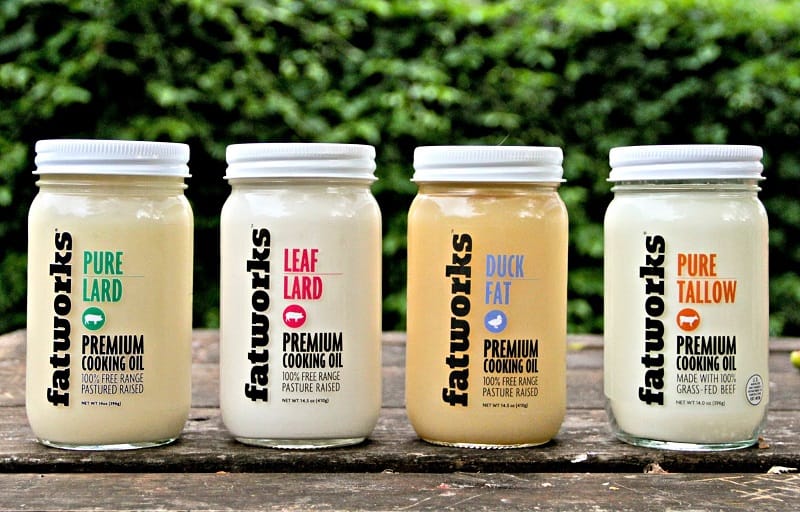
Many believe tallow and lard are unhealthy, unappealing, and even dangerous. However, as someone with firsthand experience with these ingredients, I can tell you these beliefs are untrue. Here, I will address some of the most common misconceptions about tallow and lard and explain why they are inaccurate.
Misconception #1: Tallow and lard are unhealthy.
Many assume tallow and lard are animal fats, so they must be bad for you. However, this couldn’t be further from the truth. Tallow and lard are rich in healthy, beneficial nutrients like vitamin D, K2, and omega-3 fatty acids. Additionally, these fats are free from harmful trans fats that are often found in processed vegetable oils.
Misconception #2: Tallow and lard are only good for frying.
While it’s true that tallow and lard are excellent for frying due to their high smoke points and stable nature, they can be used for so much more than that. For instance, tallow makes an excellent base for homemade soaps and skincare products, while lard can be used in baking to create delicious, flaky pie crusts and biscuits.
Misconception #3: Tallow and lard have a strong, unpleasant taste.
Some assume that tallow and lard have a strong, gamey flavor that can overpower other ingredients in a recipe. However, when properly rendered and used in the correct ratios, tallow and lard have a mild, neutral flavor that can enhance the taste of other ingredients. Many professional chefs swear by tallow and lard for their ability to add depth and richness to dishes.
Misconception #4: Tallow and lard are hard to find.
While it’s true that tallow and lard may not be as widely available as other cooking oils, they are far from impossible to find. Many specialty butchers and natural food stores carry these animal fats and can be easily ordered online. If you’re feeling adventurous, you can even render your tallow or lard from high-quality beef or pork fat.
FAQs About Tallow vs Lard
Can Tallow And Lard Be Used In Vegan And Vegetarian Cooking?
Tallow and lard are animal-based fats commonly used in cooking and baking. These fats are often used as substitutes for each other and for other cooking oils. However, they cannot be used in vegan and vegetarian cooking because they are obtained from animal sources. Tallow is made from the fat of cows, while lard is made from pig fat.
Although these fats can be refrigerated for several days, the vegetarian or vegan version is not widely available. Therefore, individuals who follow a vegan or vegetarian lifestyle should opt for vegetable oils or plant-based substitutes. However, for those who consume animal products, tallow and lard can add a unique flavor to dishes and are a common ingredient in kosher and halal cooking.
What Are The Smoke Points Of Tallow And Lard, And How Do They Affect Cooking?
Tallow is rendered beef fat and has a smoke point of around 400°F, making it ideal for frying and roasting. Lard, on the other hand, has a slightly lower smoke point of 370°F. Knowing the smoke points of these fats can help you determine the best way to use them in your cooking.
Frying or roasting with tallow will produce a crisp, golden exterior without burnt flavors or smoke, while lard may not hold up well under high heat. It’s important to keep in mind that exceeding a fat’s smoke point can not only create unwanted flavors but may also cause the formation of harmful compounds.
Conclusion
In conclusion, the debate between tallow vs lard is not transparent. Both animal fats have unique properties and can be used in various ways in the kitchen. It depends on your preferences and the dish you’re making. Tallow might be the better choice if you’re cooking something that requires high heat, like fried chicken or french fries. If you’re making a pie crust or biscuits, lard might be the way to go.
Whether you choose tallow or lard, it’s important to remember that moderation is key, as both fats are high in calories and saturated fat. Both fats are delicious and nutritious in their own right, so don’t be afraid to experiment and find out what works best for you.
References:
- https://thomassixt.de/en/recipe/vegan-lard/
- https://draxe.com/nutrition/tallow/
- https://www.masterclass.com/articles/cooking-oils-and-smoke-points-what-to-know-and-how-to-choose

Hey readers! Chip Holland here, and I’m a Manager of this website. My passion for writing about it only matches my passion for BBQ. Follow my blog for mouth-watering recipes, tips, and tricks for the perfect smoke, grill, and BBQ. I’m sure you won’t be disappointed!
